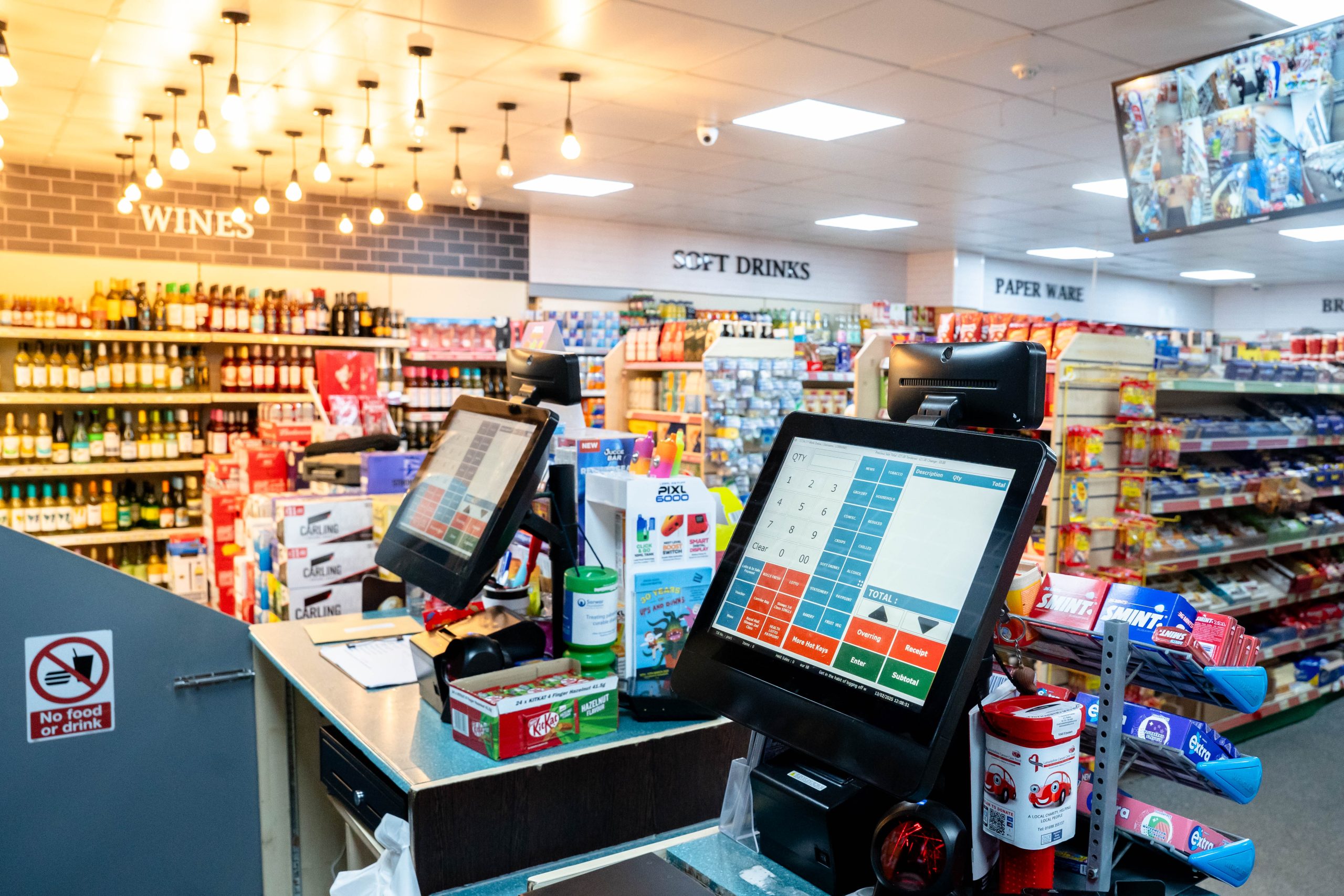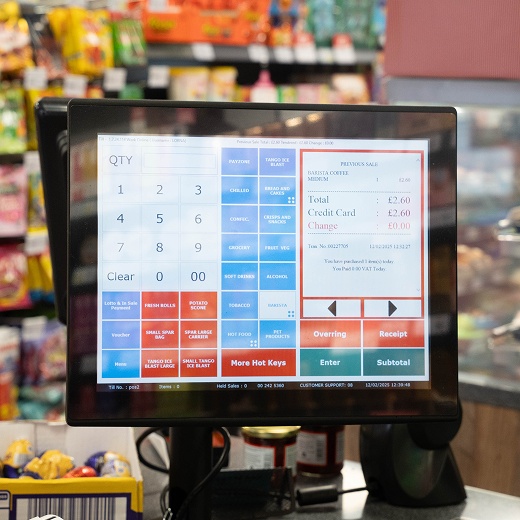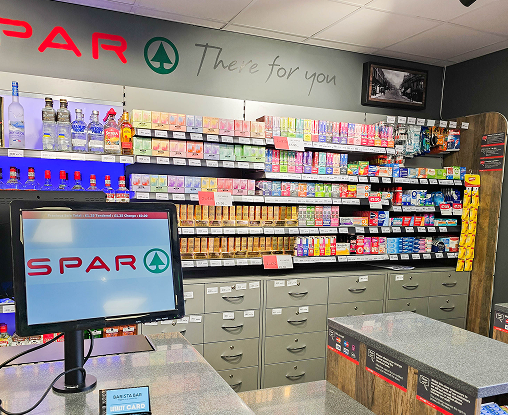In 2025, the landscape of convenience stores in the UK is rapidly evolving. No longer limited to selling snacks, beverages, or fuel, these stores are becoming dynamic community hubs that blend technology, personalised service, and local relevance. Customers today expect more than just convenience, they want stores that understand their preferences, respond to local trends, and offer seamless, efficient shopping experiences.
The article explores how modern Point of Sale (POS) systems can empower convenience stores to succeed in the age of hyperlocal retail. We will examine the key drivers behind the hyperlocal retail trend, highlight the critical role of POS systems in managing operations, and provide actionable strategies for leveraging technology to increase sales, strengthen community engagement, and build long-term customer loyalty.
The Rise of Hyperlocal Retail
Hyperlocal retail focuses on catering to the immediate community, tailoring offerings to local tastes, lifestyle patterns, and neighbourhood needs. In the UK, research shows that 60% of shoppers prefer visiting local stores that understand their preferences rather than generic chains.
Key Drivers of Hyperlocal Retail
Consumer Demand for Personalisation
Customers now expect more than standard products. Hyperlocal stores that offer locally sourced goods, artisan products, or region-specific snacks stand out. For instance, Londis stores in London have seen increased footfall by stocking locally baked bread and craft beverages that reflect the community’s preferences.
Advancements in Technology
Modern POS systems are now integrated with cloud databases, analytics, mobile apps, and loyalty platforms. This enables store owners to make data-driven decisions, predict trends, and personalise offerings efficiently.
Community Engagement
Hyperlocal retail thrives on engagement. Stores that host events, partner with local schools, or support community initiatives foster trust and repeat visits. For example, SPAR Tunbridge Wells leveraged POS data to host local tasting events, boosting sales and customer loyalty simultaneously.
The Role of POS Systems in Hyperlocal Retail
POS systems are more than cash registers, they are the operational backbone of modern convenience stores. They allow owners to track, manage, and optimise all aspects of the store.
Offer Personalised Promotions
Advanced POS systems analyse customer purchase histories to send targeted promotions. Tesco Express stores in the UK use POS-driven loyalty programs to send digital coupons to regular shoppers based on buying habits, increasing conversion rates by over 15%.
Manage Inventory Efficiently
Real-time stock updates ensure that popular local products are never out of stock. A cloud-based POS alerts store managers when demand spikes, for instance, during football matches or local festivals.
Facilitate Seamless Transactions
Modern POS systems support multiple payment options, contactless cards, Apple Pay, Google Wallet, and QR code payments, reducing queue times and enhancing convenience.
Essential Features of Modern POS Systems

1. Cloud-Based Operations
A cloud-based POS offers remote access to sales and inventory reports. Store owners can monitor performance, track multiple outlets, and make instant adjustments. For example, a Londis chain in Manchester improved its restocking efficiency by 20% after implementing cloud POS monitoring.
2. Integrated Loyalty Programs
POS-integrated loyalty programs encourage repeat purchases. Stores can reward regular customers, offer birthday discounts, or send personalised notifications. SPAR Tunbridge Wells saw a 12% increase in repeat visits after launching an integrated POS loyalty program.
3. Mobile Payment Compatibility
With 70% of UK adults preferring contactless payments, POS systems must support multiple methods. Modern mobile wallets integration reduces friction at checkout and appeals to younger shoppers who expect fast, tech-enabled service.
4. Advanced Analytics
POS analytics provide insights into peak hours, product popularity, and revenue trends. Convenience stores can adjust staff schedules, optimise product placement, and forecast demand with higher accuracy. A study by Retail Insight UK found that stores using analytics-driven POS systems reported 18% higher stock turnover.
5. Omnichannel Integration
POS systems that integrate online and offline sales channels allow stores to offer click-and-collect, local delivery, and online promotions while maintaining inventory accuracy. For example, Co-op stores in the UK use POS-integrated e-commerce to manage local deliveries efficiently, enhancing customer convenience.
Implementing Hyperlocal Strategies with POS Systems
1. Curate Local Product Offerings
Use POS sales data to determine which local products sell fastest. This approach supports local producers and builds community trust. Example: Londis stores in Birmingham saw higher sales of local craft sodas after tracking regional buying patterns via POS analytics.
2. Host Community Events
POS systems can manage ticketing, payment, and registrations for in-store events. Hosting tasting sessions, workshops, or seasonal promotions drives engagement and footfall. SPAR Tunbridge Wells increased weekend footfall by 25% through events managed via their POS system.
3. Offer Localised Promotions
Data-driven promotions increase relevance and sales. For example, during the Notting Hill Carnival, local convenience stores offered discounts on chilled beverages and snacks, driven by POS insights from previous years’ sales.
4. Implement Efficient Delivery Systems
Integrate POS with local delivery apps to manage real-time inventory and online orders. This enables rapid home delivery for local customers. ZCS POS in Southeast Asia demonstrated a 30% reduction in delivery delays after integrating their POS with local courier services, a model UK stores can emulate.
Challenges and Considerations
Data Privacy Concerns
POS systems store sensitive customer data. Compliance with GDPR and other privacy regulations is critical to avoid fines and maintain trust.
Technology Costs
Advanced POS systems require investment. While the upfront cost may be high, ROI comes through increased efficiency, sales, and customer retention.
Staff Training
Effective use of POS features requires staff training. Stores should schedule regular training sessions, particularly when upgrading software or introducing analytics tools.
Real-World Case Studies: Convenience Stores Embracing Advanced POS Systems
- SPAR Tunbridge Wells, UK
SPAR Tunbridge Wells, owned by Karan Patel, implemented a comprehensive POS solution from MSP Systems. This integration included intelligent cash drawers, digital signage, and electronic price labels. The result was a significant reduction in cash loss and theft, alongside improved store efficiency through automated pricing updates and sales tracking. This approach not only enhanced operational efficiency but also future-proofed the business by offering a seamless shopping experience for customers.
- ZCS POS Integration in Southeast Asia
A leading convenience store chain in Southeast Asia adopted ZCS’s integrated POS solution in 2024. Prior to integration, the chain faced frequent stock discrepancies and slow checkout processes. Post-integration, the chain reported:
- A 30% reduction in checkout time due to multi-payment options and fast processing hardware.
- A 25% improvement in inventory accuracy through real-time synchronization.
- Enhanced ability to manage multiple outlets remotely via a cloud-based dashboard.
The store manager noted, “ZCS’s portable and cloud-enabled POS transformed our daily operations, enabling us to serve customers faster and keep shelves stocked efficiently.”
- Wesco Convenience Stores, Michigan, USA
Wesco, a family-owned grocery store chain with 55 locations in Michigan, expanded its use of AI-powered Mashgin kiosks to streamline the checkout process. These kiosks use computer vision to instantly ring up multiple items with almost 100% accuracy, significantly reducing the time needed to pay. The integration with Verifone Commander enhances efficiency by connecting the kiosks to key store systems. Early results from Wesco’s pilot program have shown a significant reduction in transaction times, leading to faster checkouts for customers.
MPOS: Powering the Future of Hyperlocal Convenience Stores
As hyperlocal retail reshapes the UK convenience sector, MPOS, developed by MHouse Business Solutions Ltd, stands at the forefront of this transformation. With over 40 years of retail experience and more than 2,000 tills running across the UK, MPOS is purpose-built for independent retailers and convenience stores looking to thrive in a tech-driven world.
MPOS combines advanced analytics, cloud-based management, and AI-driven intelligence to give store owners complete control over every aspect of their operations. Its Handheld Terminal (HHT) allows staff to manage inventory and create purchase orders directly from the shop floor, while Electronic Shelf Edge Labels (ESELs) keep prices accurate and up to date in real time, improving customer trust and cutting labour costs.
The MPOS Till integrates seamlessly with Viva.com to offer multiple payment methods, including contactless and mobile wallets, ensuring faster and more secure transactions. Meanwhile, MyDD Points enables stores to create personalised loyalty programmes that reward regular customers and drive repeat visits.
For retailers expanding into digital channels, Snappy Shopper integration connects in-store stock with online ordering systems, supporting click-and-collect and home delivery options, ideal for today’s hyperlocal consumers who value flexibility and convenience.
MPOS also empowers data-driven decision-making with MPOS Backoffice and Sales Checker app, providing real-time reporting and AI-based insights. Its upcoming integrations with Xero and Foodel further streamline bookkeeping and online ordering processes.
By combining community-focused retailing with powerful technology, MPOS helps stores not only meet customer expectations but exceed them, creating seamless shopping journeys, building loyalty, and boosting profits in 2025 and beyond.
Conclusion
As we move further into 2025, the role of convenience stores is evolving dramatically. No longer just stops for quick purchases, these stores are increasingly becoming vibrant, hyperlocal community hubs that offer tailored experiences, foster customer loyalty, and actively engage with their surrounding neighbourhoods. At the heart of this transformation lies the Point of Sale (POS) system, a tool that is no longer merely transactional but is central to the strategy, growth, and sustainability of modern retail.
Advanced POS systems empower store owners to harness data for smarter decision-making, from tracking real-time inventory to identifying the products and promotions that resonate most with their community. By leveraging analytics, convenience stores can curate localised offerings, optimise staffing and stock, and respond quickly to emerging trends, ensuring they remain relevant and competitive. Furthermore, integrated loyalty programs, mobile payment options, and omnichannel capabilities help enhance customer convenience, turning one-time shoppers into repeat visitors and advocates of the store.
The hyperlocal approach also emphasises community engagement. Stores that use POS-driven insights to host events, support local producers, and provide services tailored to local needs create a stronger emotional connection with customers. This, in turn, drives footfall, increases revenue, and builds a sustainable, long-term business model that thrives in the digital age.
However, successfully implementing these strategies requires careful planning, investment in the right technology, and staff training to maximise the system’s potential. Data privacy, regulatory compliance, and cost management are also crucial considerations to ensure trust and operational efficiency.















